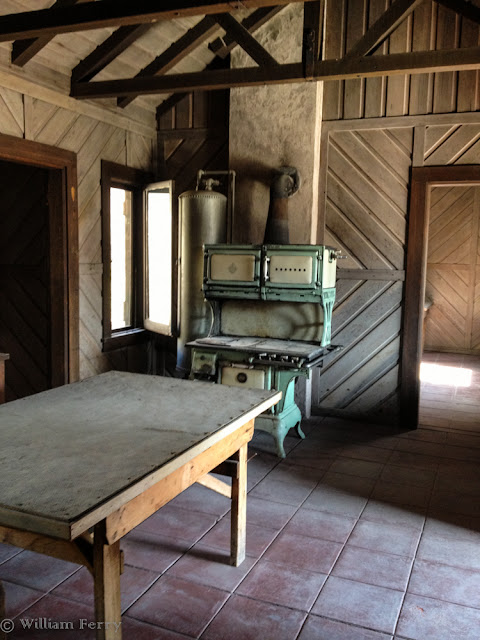Where Legends Really Reside
A man's home is his castle, or so it is said. Not for Walter Scott, the "Scotty" in Scotty's Castle. When the gates were closed, Scotty didn't bunk down here if he could avoid it. For many years Scotty was whomever other people wanted him to be: a cowboy in Buffalo Bill's Wild West Show; a huckster, verging on the criminal, for low-grade mines and finally, entertainer for eccentric Albert Johnson's guests. It was Johnson's vision and money that built Scotty's Castle. The real Scotty was an ornament.
In some respects Albert Johnson was an honorable man and more than likely became one of Scotty's few real friends. Johnson built not only the Castle but also the house that Scotty got to live in and finally be himself.
Unusually plush for a simple desert structure, considering it was built in the late 1920s. It was constructed with 2x6 insulated walls and clad inside and out in redwood. Scotty's real home was truly his castle.
Here he could be himself. And that self was a slob, as this one of many historic photos indicates. The National Park Service has obviously cleaned things up. The tour is not often offered. Indeed there were only 3 of us that met the ranger for the mile hike to Scotty's home.
Both the Castle and the cabin share the same method of fencing that has been in place for almost 100 years. The wire fence has never had to be replaced as rust is held in check by the remarkably low humidity and lack of rain. The fence also surrounds both properties. The "S" & "J" stand for Scott and Johnson. From the hills behind that fence springs give up 420 gallons per minute. That's what the fence protected.
With the same fencing as mute evidence in the background, our guide, Ranger Scott Combs, shows how Albert Johnson defused the barricading of the water supply for those who once lived or ran animals in the area. He built the stone structure visible in both the photo and behind our guide. It was a catchbasin for a water pipe that delivered water to those outside the fence. That is Walter Scott and Albert Johnson by the cistern.
At one time, Johnson and Scott cleared a 5 acre plot and for one season planted and harvested alfalfa in order to meet government requirements for homesteading the land.
Characters and charlatans come and go, but what is almost ever present is the animal life that surrounds us, all the more remarkable in Death Valley. The National Park Service chooses not to use traditional bait (which may kill other critters) but rather the lure of a nesting material (cotton). Our guide told us that in three years giving this tour in the Park, he's never seen a trap sprung.







No comments:
Post a Comment